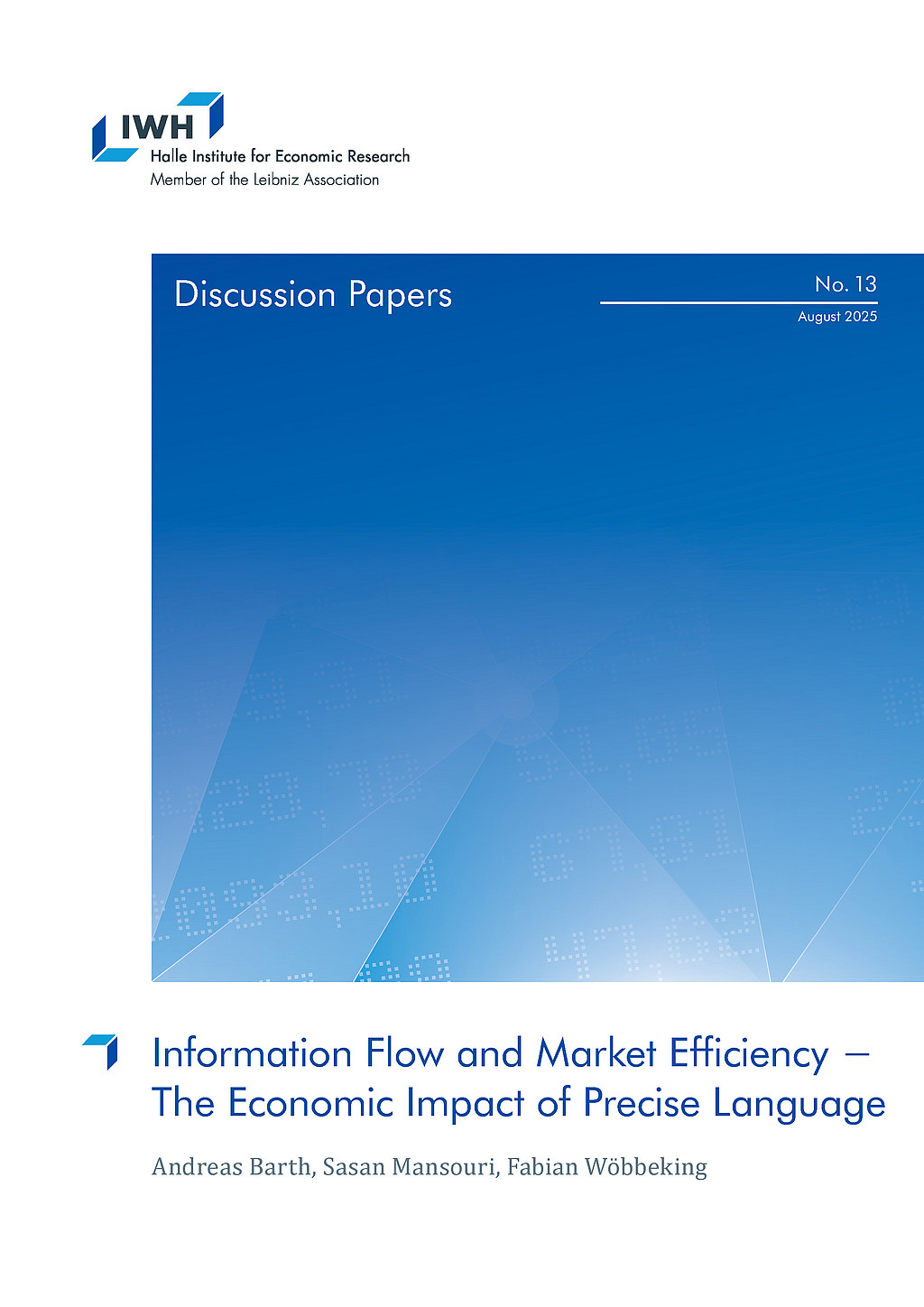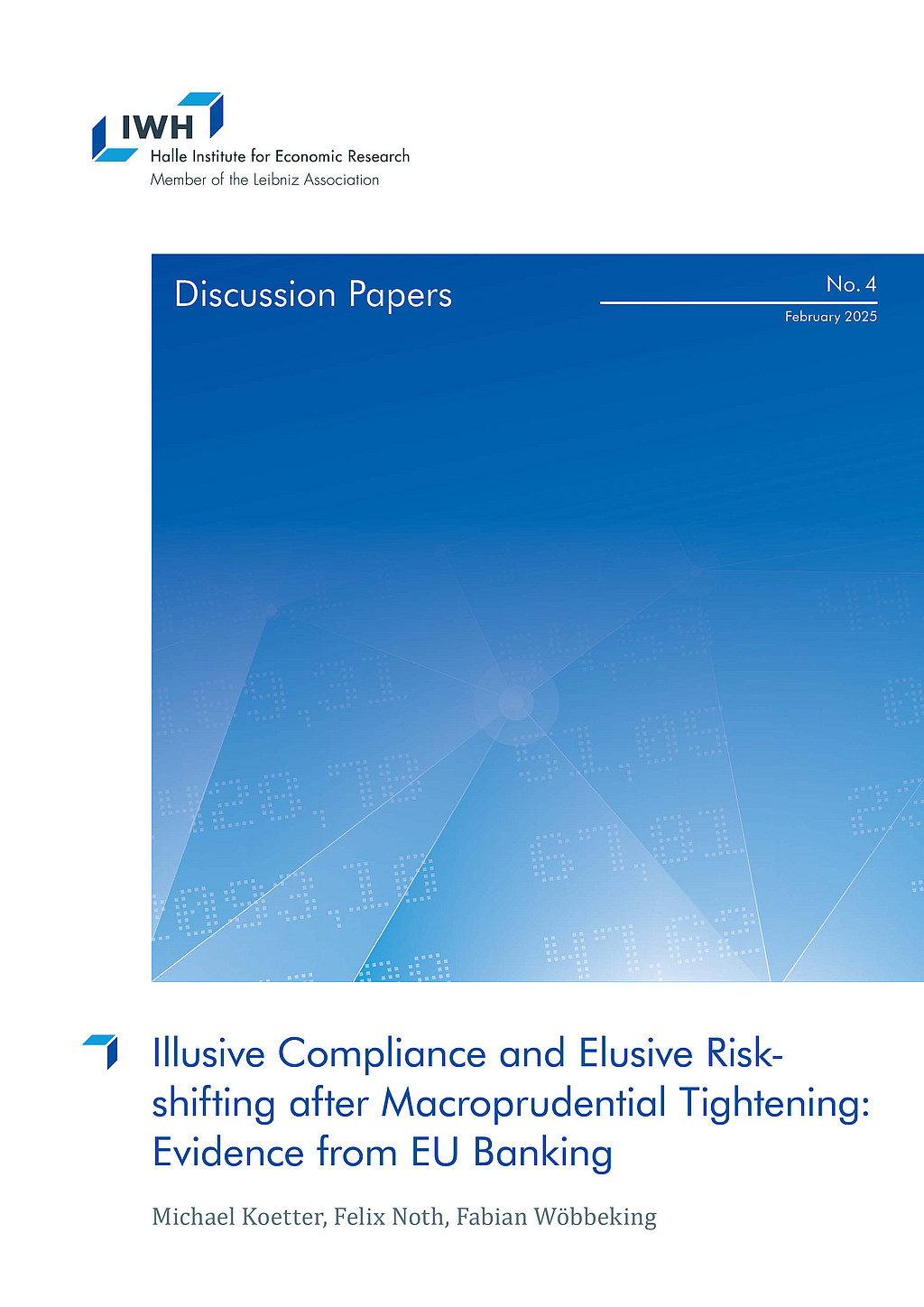Data Science in der Finanzökonomik
Die Forschungsgruppe „Data Science in der Finanzökonomik“ konzentriert sich auf die Entwicklung und Anwendung neuartiger Methoden aus dem Bereich Data Science und Künstliche Intelligenz im Kontext der Finanzökonomik. Diese Methoden dienen dazu, aus unstrukturierten Daten – wie Textdaten, Satellitenbildern oder Webscraping – ökonomische Indikatoren zu generieren. Diese Indikatoren werden anschließend in ökonometrischen Analysen eingesetzt, um zentrale Fragestellungen der Finanzökonomik zu untersuchen. Forschungsprojekte der Gruppe nutzen solche Indikatoren unter anderem zur Analyse von:
Informationsfriktionen auf Finanzmärkten, etwa im Hinblick auf die Qualität von Unternehmensberichten und Corporate Governance.
Kreditvergabeverhalten von Banken und Risikoverschiebungen auf Immobilienmärkten als Reaktion auf makroprudenzielle Regulierung.
Die Anpassung von Märkten an den Klimawandel und deren Grenzen.
Die Forschungsgruppe ist zudem an der Entwicklung des European Real Estate Index (EREI) des IWH beteiligt, der europäische Immobilienmärkte systematisch erfasst. Der EREI enthält Daten zu Angebotspreisen, Angebotstiefe (Anzahl der Inserate) und Liquidität (Verweildauer). Harmonisiert auf der NUTS-3-Regionsebene ermöglicht der Index konsistente länderübergreifende Vergleiche sowie räumliche Analysen für Wissenschaft, Politik und Öffentlichkeit.
Forschungscluster
Finanzresilienz und RegulierungIhr Kontakt

- Abteilung Finanzmärkte
Referierte Publikationen

Tail-risk Protection Trading Strategies
in: Quantitative Finance, Nr. 5, 2017
Abstract
Starting from well-known empirical stylized facts of financial time series, we develop dynamic portfolio protection trading strategies based on econometric methods. As a criterion for riskiness, we consider the evolution of the value-at-risk spread from a GARCH model with normal innovations relative to a GARCH model with generalized innovations. These generalized innovations may for example follow a Student t, a generalized hyperbolic, an alpha-stable or a Generalized Pareto distribution (GPD). Our results indicate that the GPD distribution provides the strongest signals for avoiding tail risks. This is not surprising as the GPD distribution arises as a limit of tail behaviour in extreme value theory and therefore is especially suited to deal with tail risks. Out-of-sample backtests on 11 years of DAX futures data, indicate that the dynamic tail-risk protection strategy effectively reduces the tail risk while outperforming traditional portfolio protection strategies. The results are further validated by calculating the statistical significance of the results obtained using bootstrap methods. A number of robustness tests including application to other assets further underline the effectiveness of the strategy. Finally, by empirically testing for second-order stochastic dominance, we find that risk averse investors would be willing to pay a positive premium to move from a static buy-and-hold investment in the DAX future to the tail-risk protection strategy.
Arbeitspapiere

Information Flow and Market Efficiency - The Economic Impact of Precise Language
in: IWH Discussion Papers, Nr. 13, 2025
Abstract
<p>This paper examines the impact of complex yet precise language, particularly financial jargon, on information dissemination and ultimately market efficiency. As a natural laboratory, we analyze the information exchanged during earnings conference calls, where we instrument jargon with the Plain Writing Act of 2010. Our findings suggest that the Act‘s promotion of plain language usage results in a reduction in complex financial jargon for US firms. However, in contrast to the presumed benefits of accessible language, this reduction in jargon is associated with a decrease in market efficiency, implying that the Act may inadvertently hinder information flow. This finding is particularly important at the juncture where human-generated information is received by machines, which are known to be vunerable to ambiguous inputs.</p>

Illusive Compliance and Elusive Risk-shifting after Macroprudential Tightening: Evidence from EU Banking
in: IWH Discussion Papers, Nr. 4, 2025
Abstract
<p>We study whether and how EU banks comply with tighter macroprudential policy (MPP). Observing contractual details for more than one million securitized loans, we document an elusive risk-shifting response by EU banks in reaction to tighter loan-to-value (LTV) restrictions between 2009 and 2022. Our staggered difference-in-differences reveals that banks respond to these MPP measures at the portfolio level by issuing new loans after LTV shocks that are smaller, have shorter maturities, and show a higher collateral valuation while holding constant interest rates. Instead of contracting aggregate lending as intended by tighter MPP, banks increase the number and total volume of newly issued loans. Importantly, new loans finance especially properties in less liquid markets identified by a new European Real Estate Index (EREI), which we interpret as a novel, elusive form of risk-shifting.</p>

How to Talk Down Your Stock Performance
in: SSRN Discussion Papers, 2020
Abstract
We process the natural language of verbal firm disclosures in order to study the use of context specific language or jargon and its impact on financial performance. We observe that, within the Q&A of earnings conference calls, managers use less jargon in responses to tougher questions, and after a quarter of bad economic success. Moreover, markets interpret the lack of precise information as a bad signal: we find lower cumulative abnormal returns and a higher implied volatility following earnings calls where managers use less jargon. These results support the argument that context specific language or jargon helps to efficiently and precisely transfer information.










